How to Grow Radishes
Radishes are a very easy vegetable for a beginning gardener to grow. They grow fast, aren’t plagued with many diseases, and most pests are not a fan. Radishes don’t need a lot of space and are harvested quickly making room for other vegetables. They are easily suited to containers or gardening in raised beds. Kids enjoy growing them because they can sow them and eat them in 3-4 weeks.
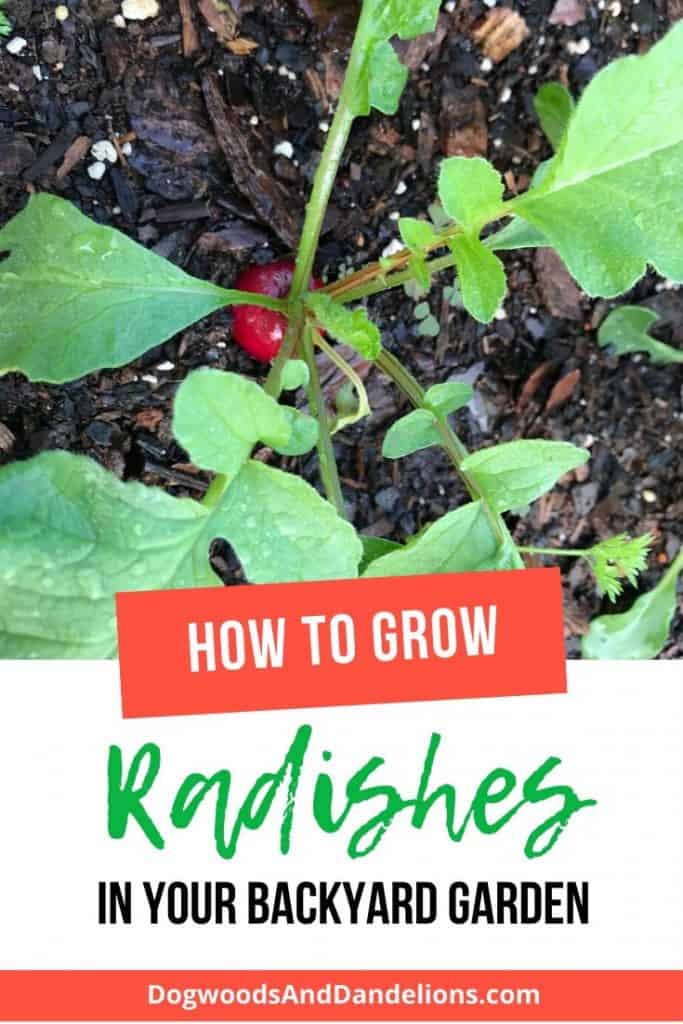
Affiliate Disclosure: Please note that some of the links in this article may be affiliate links and I may receive a small commission if you purchase something through a link. It will not change your cost. As an Amazon Associate, I earn from qualifying purchases. For more information, see my disclosures page.)
Types of Radishes
There are two main types of radishes-spring radishes and long season (winter) radishes.
Spring Radishes
Spring radishes are usually round and are great for quick growth. Most varieties are edible in about a month with some being ready in as little as 3 weeks.
Long Season or Winter Radishes
Long season or winter radishes have longer roots and are slower growing. They hold better in the garden than spring radishes. They will also keep longer in the refrigerator after harvest. These include Daikon radishes and all of the Asian radishes.
How to grow radishes
Radishes need to be planted in loose soil while the temperature is still cool. They are always started from seed directly in the garden as they don’t transplant well. (Most root crops don’t take well to being transplanted.) Plant them in an area that receives at least 6 hours of sunlight a day and cover the seeds with 1/2 inch of soil. Once the seeds sprout, they need to be thinned to 2-3″ between each plant.
Radishes need consistent moisture to germinate and while they are growing. Lack of proper water will lead to woody radishes with an overly spice bite. However, too much water will cause radishes to split and rot.
It is best to sow a few radish seeds each week, rather than plant one mass planting of them. This way, you can eat a few here and a few there. If you plant a bunch all at one time, they will mature at the same time, therefore they will need to be eaten all at the same time! They don’t hold well in the garden and spring radishes only hold about a week or so in the refrigerator.
Spring radishes don’t tolerate heat well (they are a cool season crop) so once the temperature rises above 65 degrees, it’s time to stop planting seeds.
The long season varieties do tend to handle the heat a bit better than the round types, so as the season progresses, start planting the longer ones. Keep in mind, however, that the longer varieties also take longer to mature. These can be planted into the fall as well since mild frosts improve their quality.

What to plant with radishes
Radishes grow well with many other crops. Gardeners that still grow a traditional row garden often plant radishes with carrots, beets, or parsnips because the radishes germinate quickly and will allow the gardener to know where the rows of the slower germinating crops are located. The radishes will be harvested long before the other root crops need the space.
Radishes are also a great crop to plant among peppers, squash, zucchini, and cucumbers. They help to deter flea beetles and aphids from feasting on the other vegetables. When you are planting radishes with these summer crops, don’t plant to harvest the radishes as they will quickly go to seed in the heat of the summer. You are planting the radishes here as a trap crop so the bad bugs will feast on them instead.
How to harvest radishes
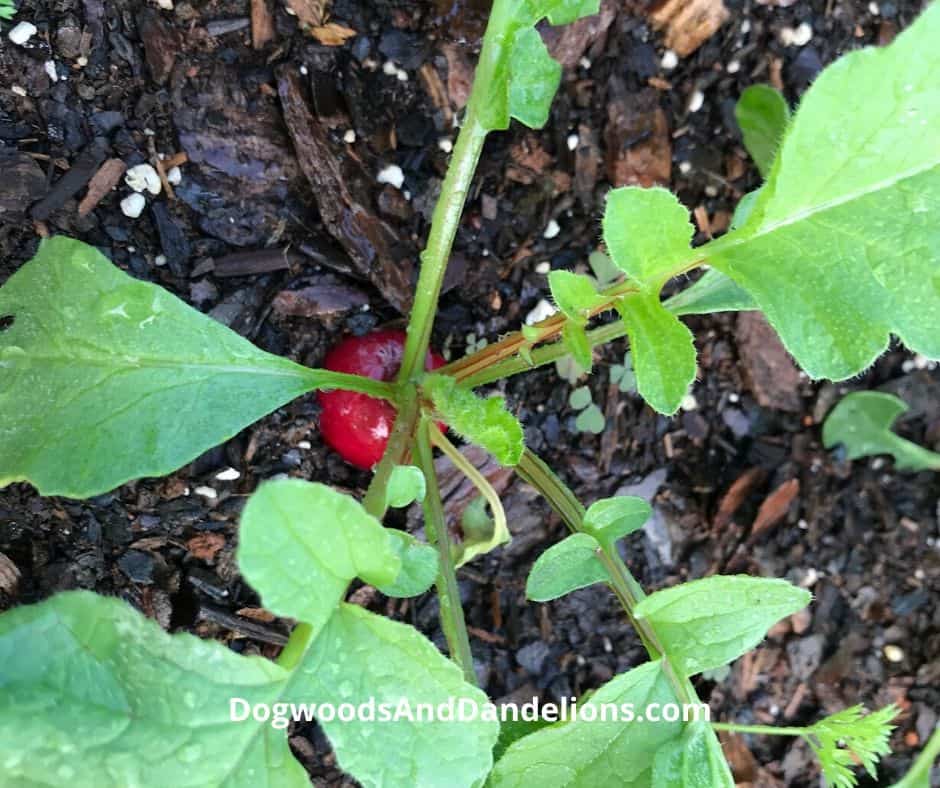
The best way to know when to harvest radishes is to pull one and taste it. It is better to pull radishes too early, rather than too late. Waiting too long to harvest them will lead to radishes with pithy texture and a strong, spicy flavor. When you find that one is ready, pull all the radishes from that sowing. They don’t keep in the ground like carrots do.
Once you harvest radishes, Cut the tops off immediately. Otherwise, they will suck the moisture from the root and you’ll have a soft, squishy, limp radish. Store them in the refrigerator for up to a week in a plastic bag or covered container. (Some varieties can even be stored 3-4 weeks, but check them weekly to see if they need to be used.)
A little known fact about radishes is that the greens are edible too. You can steal a few baby radish leaves while they are young or eat the tops after harvesting the whole radish. Radish leaves are often added to salad greens.
Diseases & Pests
While pests and diseases tend to be few and far between with radishes, I do want to mention a few pests that occasionally bother this crop.
Radishes tend to be a favorite crop of slugs and snails. They often chew holes in the roots which is unsightly and can leave them open to diseases and fungus. This can also cause them to start rotting. Often, a shallow dish of beer placed in the garden will catch the slugs and snails and drown them.
Flea beetles tend to love radishes too, but you can use this to your advantage. They make a good trap crop to keep the beetles off other vegetables. Try planting radishes around eggplants in the summer to entice the flea beetles away from your eggplants.
If you want to get rid of the flea beetles so you can eat your radishes, you can try using yellow sticky traps. These will attract the flea beetles and they will get stuck and die. Using row covers can help keep the beetles away, and using diatomaceous earth or neem oil will also work.
Favorite varieties of Radishes
While I have not grown nearly the number of varieties of radishes as I have lettuce, I have tried a few. These have been my favorites of the ones I have tried. Unfortunately, I have not tried any of the longer radishes, called icicle or daikon radishes. If you have grown any of them, I would love to know in the comments what your favorite varieties are.
(All links below are to Amazon, so you can see what the varieties look like. Feel free to shop around for the best prices.)
Easter Egg Blend-This is a popular mix of red, pink, lavender, purple, and white radishes. They are all white on the inside.
Halloween Mix-I’m trying this version for the first time this year! This is a blend of varieties that are Halloween colors-yellow, black, and white. Don’t they look cool?
Cherry Belle-This is an early radish that is very easy to find seeds for. Cherry Belle is a mild red radish that grows perfectly round. This kind is often the type found in grocery stores.
I also hope to try the watermelon radish. It is white on the outside but looks like a watermelon when sliced. This radish is best grown in the fall, so I’ll have to wait until then to see how it grows. It sure is a beauty!
Ways to use your radishes
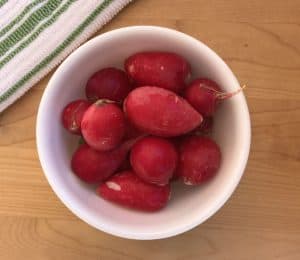
There are many ways to eat radishes. Of course, you can slice them and add them to salads or tacos. But radishes can also be pickled or sauteed. I have also heard of replacing potatoes in a soup or stew with radishes for a lower carb option.
If you think you don’t like radishes, try roasting them. I tried this recipe from Wicked Spatula for crispy roasted radishes the other night and it was delicious. I will definitely be making the recipe again.
So tell me, what is your favorite way to eat radishes?
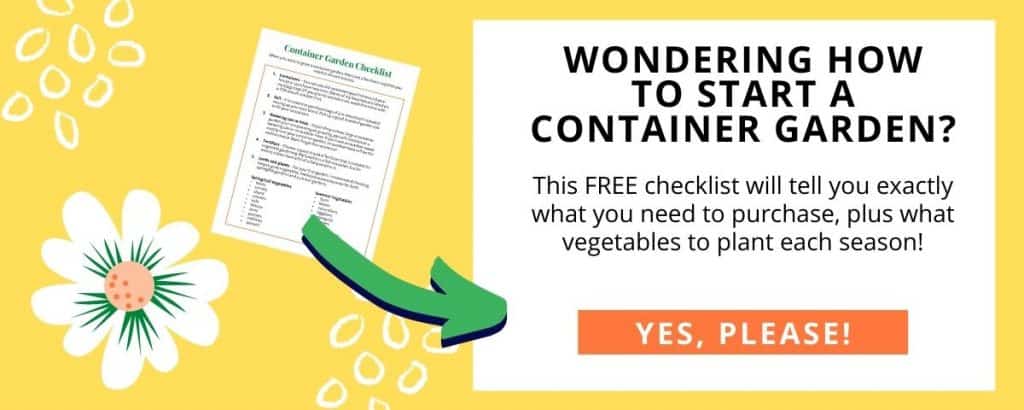
Related Posts
- Grow your own food in a hurry with Fast Growing Vegetables.
- The best vegetables for new gardeners to grow.
- Easy Vegetables to Grow in the spring.
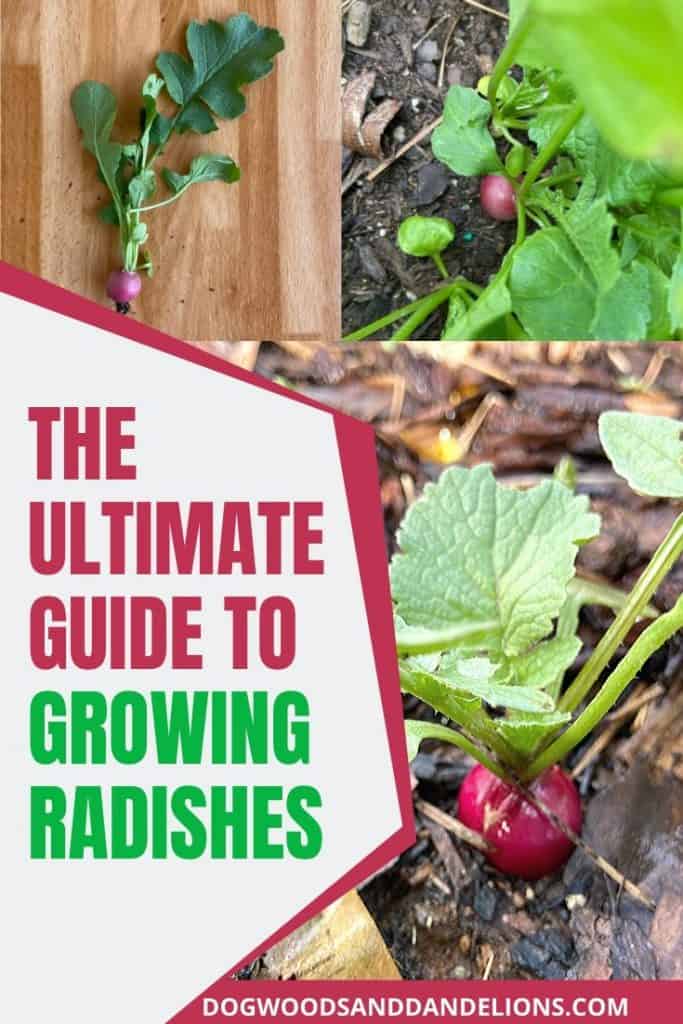

I love to can honey pickled radishes!
Honey pickled radishes sound amazing. I can’t wait to try your recipe this year! Thanks for sharing.